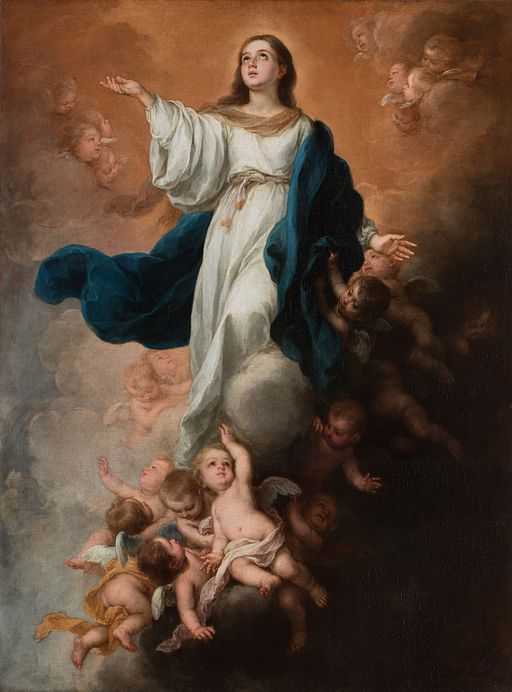
If you lived in 17th Century Seville, you might expect this to be an image of the Immaculate Conception rather than the Assumption. And perhaps it is. Murillo painted the Immaculate Conception again and again. The upward gaze of the Virgin, her gesture, the way the putti seem to lift her and the sense of movement from darkness below into heavenly light suggest to some that this is the Assumption. The backdrop to this is the rather elaborate symbolism of Our Lady’s purity which had developed over centuries. Earlier artists would have taken some of the many symbols associated with Mary’s purity, such as a well, or a tower, or a fortified building and worked them into the composition. But Murillo simplifies this. Here she is the woman clothed with the sun from today’s the first reading (Rev 12:1). However, there is no a crown of twelve stars and no moon under her feet (as in the Madonna in our Chapel). Instead, she is being lifted up into heavenly light. There is a very similar painting at the Prado entitled, “The Immaculate Conception of Los Venerables” . In it, the symbols of the Litany of Loreto were to be found ,not in painting itself, but in its heavy gold frame. In 2013 the frame and that painting were reunited after a break of 200 years for an exhibition of Murillo at the Dulwich Picture Gallery.
The Catholic Chaplaincy serves the students and staff of the University of Edinburgh, Edinburgh Napier University and Queen Margaret University.
The Catholic Chaplaincy is also a parish of the Archdiocese of St Andrews and Edinburgh (the Parish of St Albert the Great) and all Catholic students and staff are automatically members of this parish.